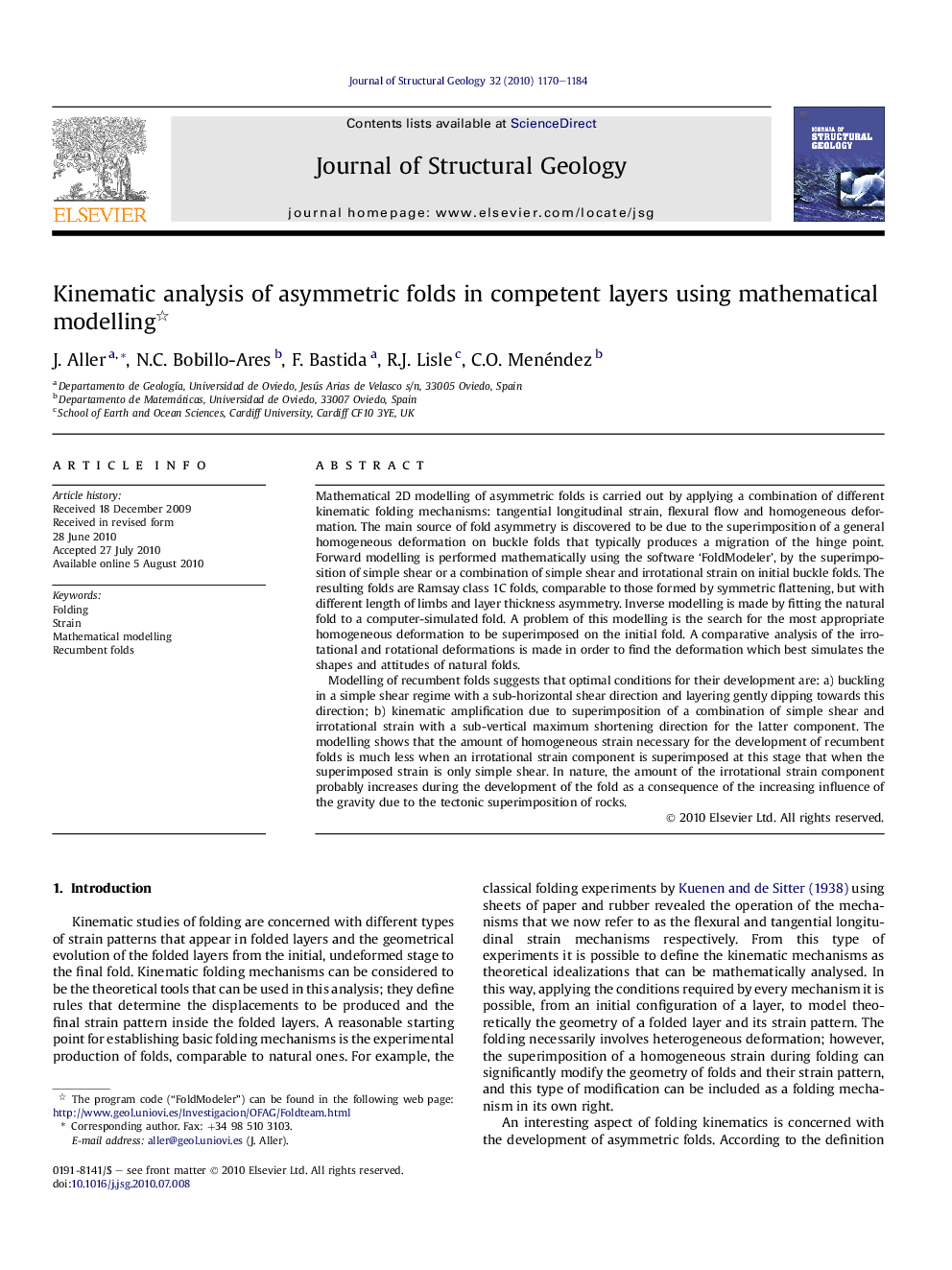| Article ID | Journal | Published Year | Pages | File Type |
|---|---|---|---|---|
| 4733640 | Journal of Structural Geology | 2010 | 15 Pages |
Mathematical 2D modelling of asymmetric folds is carried out by applying a combination of different kinematic folding mechanisms: tangential longitudinal strain, flexural flow and homogeneous deformation. The main source of fold asymmetry is discovered to be due to the superimposition of a general homogeneous deformation on buckle folds that typically produces a migration of the hinge point. Forward modelling is performed mathematically using the software ‘FoldModeler’, by the superimposition of simple shear or a combination of simple shear and irrotational strain on initial buckle folds. The resulting folds are Ramsay class 1C folds, comparable to those formed by symmetric flattening, but with different length of limbs and layer thickness asymmetry. Inverse modelling is made by fitting the natural fold to a computer-simulated fold. A problem of this modelling is the search for the most appropriate homogeneous deformation to be superimposed on the initial fold. A comparative analysis of the irrotational and rotational deformations is made in order to find the deformation which best simulates the shapes and attitudes of natural folds.Modelling of recumbent folds suggests that optimal conditions for their development are: a) buckling in a simple shear regime with a sub-horizontal shear direction and layering gently dipping towards this direction; b) kinematic amplification due to superimposition of a combination of simple shear and irrotational strain with a sub-vertical maximum shortening direction for the latter component. The modelling shows that the amount of homogeneous strain necessary for the development of recumbent folds is much less when an irrotational strain component is superimposed at this stage that when the superimposed strain is only simple shear. In nature, the amount of the irrotational strain component probably increases during the development of the fold as a consequence of the increasing influence of the gravity due to the tectonic superimposition of rocks.
Research highlights► Fold asymmetry can be analysed using three simple indices. ► Mathematical modelling can be used to decipher kinematic mechanisms of folds. ► Fold asymmetry is mainly produced during passive amplification. ► Simple shear and pure shear components are needed for formation of recumbent folds.
